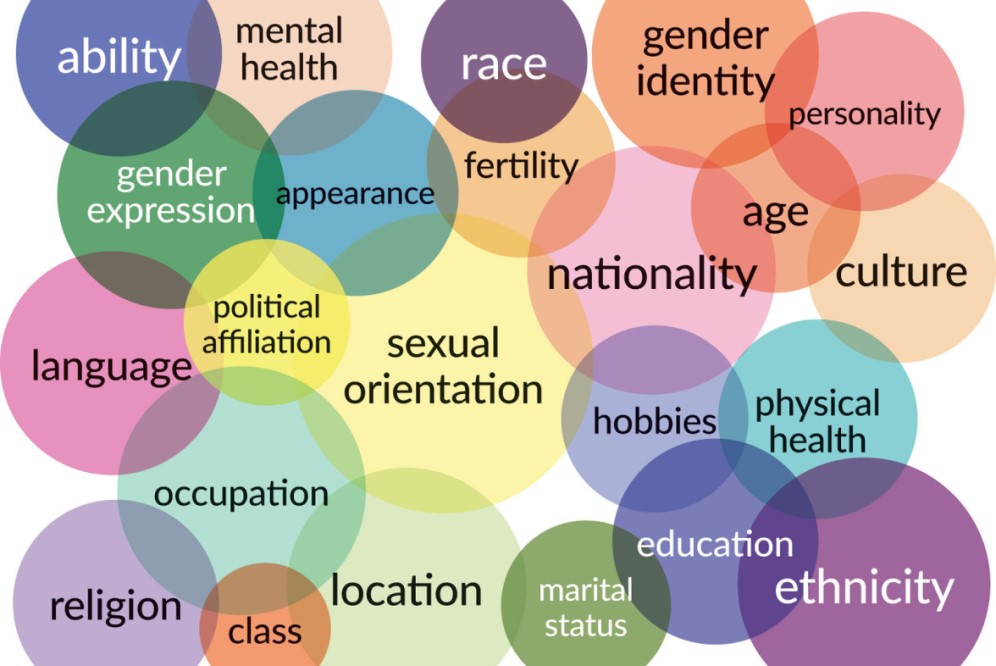
With the recent social unrest in the United States, organizations may need a framework to better understand the issues surrounding these events. Intersectionality is one of many lenses that can be used to better understand these issues.
The Intersection of Race and Sex
First, an explanation of the term intersectionality. The ideas of what would eventually be called intersectionality have some of their roots based in 1970s feminism. “Black feminist scholar-activists, a number of whom were LGBTQ, developed theoretical frameworks to serve as a model for other women of color, to broaden feminism’s definition and scope.”1 During this time, feminism was broadly focused on the experiences of heterosexual, white women while disregarding issues such as sexuality and race.
The term intersectionality was coined by Kimberle Crenshaw, who, at the time, taught law at the University of California, Los Angeles, Law School. Her piece, “Demarginalizing Intersection of Race and Sex: A Black Feminist Critique of Antidiscrimination Doctrine, Feminist Theory, and Antiracist Polices” (1989) was groundbreaking in framing these many ideas into the term intersectionality. For the majority of her career, Crenshaw has focused on the idea of critical race theory. According to the Encyclopedia Britannica, critical race theory (CRT) is “the view that the law and legal institutions are inherently racist and that race itself, instead of being biologically grounded and natural, is a socially constructed concept that is used by white people to further their economic and political interest at the expense of people of colour.”2 In her piece, Crenshaw attempts to create a legal framework to better explain intersectionality that involves three court cases addressing the issue of race and sex discrimination. More specifically, that in each court case, the ruling only applied a singular analysis of either race or sex discrimination, but not both. For example, one of the plaintiffs is an African American woman, and Crenshaw argues that the law forgets that African American women are both racially Black and female, and can be discriminated against on the basis of both of these traits.
Prior to this, courts had found cases involving claims for both racial and sex discrimination to be impracticable. More specifically in one of the cases, DeGraffenreid vs. General Motors (1976), five African American women sued General Motors regarding a company policy that they felt targeted African American women. According to the policy, General Motors did not hire African American women prior to 1964, and when layoffs occurred in the 1970s, all African American women hired prior to 1964 were laid off. The courts did not allow the women to sue for both race and sex discrimination, and as stated above, ruled that considering both types of discrimination made their case unworkable. With her piece, Crenshaw hoped to bring to light that courts were not considering all different intersectional perspectives when interpreting discrimination law.3
Defining Intersectionality
For a broader definition, the Oxford Dictionary defines intersectionality as “the interconnected nature of social categorizations such as race, class, and gender, regarded as creating overlapping and interdependent systems of discrimination or disadvantage; a theoretical approach based on such a premise.”4 Figure 1 demonstrates the countless, different overlapping systems that make up intersectionality. The use of the term intersectionality has been widely adopted by a variety of groups since it was coined in the late 1980s. Many groups have embraced the ideas of intersectionality in their movements, including the #Metoo, Black Lives Matter (BLM), and LGBTQIA+ movements.
When attempting to formulate how to respond to social unrest in our communities, intersectionality is one lens that can be utilized to view and understand these issues. While this lens is not the only way to examine pivotal issues, it may give organizations additional perspective that they may not have considered. The times we are currently facing require a greater understanding of intersectionality, and how the different facets of the human condition warrant nuanced responses.
The LGBTQIA+ Lens
For those of us in the LGBTQIA+ community, the lens through which events are seen may be slightly different than the rest of the population. Though the community has made great strides in the last two decades, the right to serve in the military,5 inherit from your spouse,6 get married,7 and sue for employment discrimination8 are newly minted for us. For transgender individuals, some of these rights are still not guaranteed, with the federal government placing a prohibition on transgender individuals from serving in the military only three years after they were initially allowed to serve openly,9 and multiple other protections being removed. Simply existing as a gay man or lesbian in some countries is punishable by death,10 and the murders of transgender People of Color have made headlines in the United States frequently over the past year.
For some in the LGBTQIA+ community, this rapid change adds a different layer of perspective and illustrates how the goals and struggles of the community are not neatly sorted. The win on marriage for same-sex couples at the U.S. Supreme Court in 2015 did not signal the end of the movement for LGBTQIA+ equality.
Since the start of 2020, the year has been a microcosm of all the current ails in society proliferating and solidifying at once, resulting in protests, riots, further social inequality, a pandemic, and an economic crisis of unparalleled size. A lack of federal leadership to tackle these issues has exacerbated their impact and forced state and local governments to fend on their own.
Intersectionality During COVID-19
In the midst of the COVID-19 pandemic and protests over police brutality and race issues, transgender individuals have continued to see their federal protections erode, with federal regulations around homeless shelters and healthcare being modified to accommodate religious beliefs of shelter providers11 and healthcare providers.12 Rules such as these may impact the willingness and ability of individuals to seek shelter or medical care, which could have profound implications for local governments that are seeking to stop the transmission of a pandemic.
According to the Commonwealth Fund, approximately half of the 137,501 entities covered by the rule change are expected to rescind protections for transgender individuals, “including access to health services, receiving care consistent with their gender identity, and getting coverage for gender transition services.”13 On top of potential discrimination in healthcare, transgender individuals already face serious issues with public harassment, mental health issues, and economic issues, which are compounded for transgender People of Color.
This year has ignited a unique mix of serious crises and local governments have found many ways to address the issues when confronted with them. Across the country, local governments enacted mandatory face mask statutes, shelter-in-place orders, reforms of their police departments and policing statutes, and community engagement initiatives to address systemic racism. On April 2, 2020, Laredo, Texas, became the first jurisdiction in the United States to mandate that residents wear a mask in public to help stem the transmission of COVID-19, with a fine of $1,000 for any individual that ventured into public without one.14 The cost of the fine caused some controversy in the community, where roughly one third of the population lives at or below the poverty line, but ordinances and mandates for mandatory face masks became more widespread when the CDC changed its initial guidance and began recommending they be worn to prevent the spread of the virus.
The pandemic has laid bare how the connections between race, class, and gender have fueled disproportionate rates of the disease among the Black and Latino population, particularly women, due to their overrepresentation among low-income workers. The hospitalization and death rates for the Black community in particular are considerably worse than for white people.15 As our understanding of COVID-19 deepens, we also have begun to see a deeper connection to the root causes of why these communities have higher transmission rates and worse health outcomes.
In late May, while still in the throes of the COVID-19 pandemic, a police officer in Minneapolis knelt on the neck of George Floyd, a Black man, for almost nine minutes, leading to his death by asphyxiation; his last words were “I can’t breathe.”16 His death ignited protests large and small across more than 350 cities in all 50 states, as well as solidarity protests in at least 48 other countries.17 Communities are struggling to cope with the repercussions of protests, heightened tensions, and increased awareness around racial issues. City councils around the country are coping with a swift change in public opinion on policing in the aftermath of Floyd’s death. The Minneapolis City Council voted unanimously to abolish their police department in late June, pending a vote by the public in November. The police department would be replaced by a department of community safety and violence prevention, which may have a smaller division for law enforcement, if the legislation is approved by voters.18
Taking Action
After reading through this piece, you might be asking, what can my organization do to step up in these challenging times? In the final section, we want to provide a brief internal and external example of what some organizations have done to address these issues.
Internally, local governments have sought to establish a broad range of resources for employees, including employee resource and affinity groups, diversity or equity offices, and public safety liaisons to these communities. Human resource departments have also begun providing a broad range of training, with an emphasis on fostering a welcoming environment to encourage employee productivity. Local government managers need to be cognizant of the individual conditions that their employees face, and how they are supporting their employees to further the mission of their organization at a time when municipalities are facing severe constraints on their financial resources.
Externally, our organizations are facing an ever-growing chorus for us to respond to the recent social unrest. In many instances, it could be difficult for an organization to formulate a response. This may be for many reasons, including over-analyzing the response or being afraid that the response could contribute to worse civil unrest. The bottom line is that the public expects us, as leaders and organizations, to step up and meet the calls for change during these challenging times.
Most recently, when civil unrest occurred after the death of George Floyd, there were examples of local governments coming forward to help formulate solutions. Sheriff Chris Swanson of Genesee County, Michigan, made national headlines by putting down his riot gear and joining a protest against police brutality.19 Other local governments have taken the opportunity to present initiatives intended to improve their local police forces. Police Chief Ana Lalley of Elgin, Illinois, with the approval of the city council, announced the formation of a task force to examine areas of improvement for the police department, the launching of an online community survey, and establishment of eight resident-led community advisory boards to discuss policing issues. Also, Chief Lalley announced that police officers and the community will take part in the “21-day Racial Equity Challenge,” created by the Privilege Institute, which involves taking action to address issues such as power, privilege, supremacy, oppression, and equity.20,21
As community leaders, we have a responsibility to promote and serve the best interests of our community. Going forward, that means taking diversity and the intersectional interests of our communities into account throughout any decision-making process, especially during crises of the magnitude that we have experienced this year.

JUSTYN MILLER is assistant to the village administrator in Berkeley, Illinois, and a member of the CivicPRIDE Steering Committee. CivicPRIDE is the first nationally recognized professional association for LGBTQIA+ professionals in local government. (jmiller@berkeley.il.us)

NATHAN BASSETT is a senior budget analyst in Gaithersburg, Maryland, and a member of the CivicPRIDE Steering Committee and the Metropolitan Washington Council of Governments 2019–2020 cohort on Race and Equity conducted by the Government Alliance on Race and Equity (GARE). Find him on Twitter: @nathanjbassett. (nathan.bassett@gaithersburgmd.gov)
Endnotes and Resources
1 “What Is Intersectionality? A Brief History of the Theory | Time.” 28 Mar. 2019, https://time.com/5560575/intersectionality-theory/. Accessed 6 Jul. 2020.
2 “critical race theory | Definition & Facts | Britannica.” 28 May. 2020, https://www.britannica.com/topic/critical-race-theory. Accessed 7 Jul. 2020.
3 “Demarginalizing the Intersection of Race and Sex: A Black ....” https://chicagounbound.uchicago.edu/cgi/viewcontent.cgi?article=1052&context=uclf. Accessed 6 Jul. 2020.
4 “Intersectionality | Definition of Intersectionality by Oxford ....” https://www.lexico.com/en/definition/intersectionality. Accessed 2 Jul. 2020.
5 “Don’t Ask, Don’t Tell” repeal legislation signed by President Barack Obama on December 22, 2010, and implemented in October 2011. https://archive.defense.gov/home/features/2010/0610_dadt/. Accessed 10 Jul. 2020.
6 Decided 26 June 2013. https://www.supremecourt.gov/opinions/12pdf/12-307_6j37.pdf. Accessed 11 Jul. 2020.
7 Decided 26 June 2015. https://templatelab.com/obergefell-v-hodges-decision/. Accessed 3 Feb 2023.
8 Decided 15 June 2020. https://www.law.cornell.edu/supremecourt/text/17-1618. Accessed 3 Feb 2023.
9 https://www.nbcnews.com/feature/nbc-out/trump-s-controversial-transgender-military-policy-goes-effect-n993826. Accessed 11 Jul. 2020.
10 According to this photo article from June 2019, 12 countries still enforce the death penalty for gays and lesbians. https://www.usatoday.com/picture-gallery/life/2019/06/13/iran-yemen-among-countries-where-being-gay-is-punishable-by-death/39574925/ Accessed 11 Jul. 2020.
11 https://www.nytimes.com/2020/07/01/us/politics/hud-transgender.html. Accessed 10 Jul. 2020.
12 https://www.npr.org/sections/health-shots/2020/06/12/868073068/transgender-health-protections-reversed-by-trump-administration. Accessed 10 Jul. 2020.
13 Corinne Lewis, Yaphet Getachew, and Mekdes Tsega, “Federal Government Moves to Eliminate Protections in Health Care for Transgender Americans,” To the Point (blog), Commonwealth Fund, updated June 19, 2020. https://doi.org/10.26099/wyyj-yn46. Accessed 10 July 2020.
14 https://www.washingtonpost.com/nation/2020/04/03/laredo-coronavirus-masks/. Accessed 10 Jul. 2020.
15 https://www.forbes.com/sites/naomicahn/2020/05/10/mothers-day-and-covid-19s-impact-on-women-of-color/#4474308041ac. Accessed 12 Jul. 2020.
16 https://www.startribune.com/four-fired-minneapolis-officers-booked-charged-in-killing-of-george-floyd/570984872/. Accessed 12 Jul. 2020.
17 https://www.aljazeera.com/indepth/interactive/2020/06/mapping-cities-george-floyd-protests-erupted-200601081654119.html. Accessed 11 Jul. 2020.
18 https://www.npr.org/sections/live-updates-protests-for-racial-justice/2020/06/26/884149659/minneapolis-council-moves-to-defund-police-establish-holistic-public-safety-forc. Accessed 12 Jul. 2020.
19 “Meet Chris Swanson, Genesee County sheriff who joined Flint ....” 4 Jun. 2020, https://www.freep.com/story/news/local/michigan/2020/06/04/chris-swanson-genesee-county-sheriff-protests/5308685002/. Accessed 12 Jul. 2020.
20 “Elgin chief presents initiatives for police improvement, while ....” 25 Jun. 2020, https://www.dailyherald.com/news/20200625/elgin-chief-presents-initiatives-for-police-improvement-while-council-wants-task-force. Accessed 12 Jul. 2020.
21 “21-Day Racial Equity Challenge — America & Moore.” https://www.eddiemoorejr.com/21daychallenge. Accessed 12 Jul. 2020.
New, Reduced Membership Dues
A new, reduced dues rate is available for CAOs/ACAOs, along with additional discounts for those in smaller communities, has been implemented. Learn more and be sure to join or renew today!
